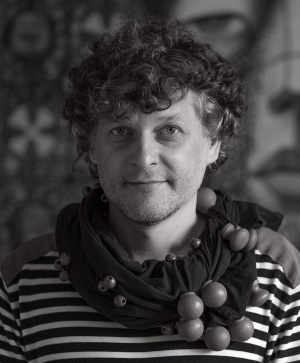THE LAY OF IGOR’S HOST
Presentation copy
A presentation version of the greatest work of Early Russian literature from the 12th century. The book’s cover, decorated with a sumptuous composition of precious metals and stones, is a worthy setting for engravings by Honoured Artist of the Russian Federation Yury Lyukshin that are astonishing in their beauty and emotional intensity, as well as the text of the poem written out by hand in ustav, the uncial-style script that is the earliest form of Cyrillic writing.

Graphic artist, painter, book illustrator, teacher. Has taken part in more than 300 exhibitions in Russia and abroad, including 65 solo exhibitions. Member of the Artist’s Union and of the International Association of Art Critics. Honoured Artist of Russia.

Graphic artist, calligrapher, painter and sculptor. Participant in the 1st International Calligraphy Exhibition in Moscow in 2008 (and regularly thereafter), as well as many group and personal exhibitions in Russia and abroad. Member of the Artists’ Union of Russia.
Additional information
Details of the creation of this masterpiece
-
Year of publication:2012
-
Number of pages:108
-
Dimensions:530 × 380 mm
-
Paper:Hahnemühle (Germany), 300 g/m², handmade
The first copy of The Lay of Igor’s Host came out in 2012. The planned edition is 30 numbered copies. In the spring of the same year, the publishing house completed work on this presentation copy of the book. The unique folio differs not only in the design of the cover, but also in the technique used to produce the illustrations.
Creator of the illustrations, design from the embossing, illuminated initials, frames, vignettes, headpieces, tailpieces — Yury Lyukshin
Calligraphy — Denis Lotarev
Layout — Yevgeny Bolshakov
Printing of the embossing — Alexander Mikhailov
Design of the cover, jewelry work — Pavel Yekushev, Nikita Fedorov
Binding work — Andrei Degtev, Andrei Kulikov
Each page of the book is a unique work of art, the result of a creative alliance between two gifted artists – Yury Lyukshin and Denis Lotarev.
The frame of the mount is made in the form of a serpent biting its own tail (in Slavonic mythology the serpent is a living embodiment of all things evil, uncanny, crafty and harmful). In the lower part of the composition is an image of the enemy Polovtsian forces – mystical predatory beasts whose sharp claws are associated with the spears of the Polovtsians directed against the Russian prince’s host.
The book has a mahogany case to keep it in.
Additional information
Details of the creation of this masterpiece
-
Year of publication:2012
-
Number of pages:108
-
Dimensions:530 × 380 mm
-
Paper:Hahnemühle (Germany), 300 g/m², handmade
The first copy of The Lay of Igor’s Host came out in 2012. The planned edition is 30 numbered copies. In the spring of the same year, the publishing house completed work on this presentation copy of the book. The unique folio differs not only in the design of the cover, but also in the technique used to produce the illustrations.
Creator of the illustrations, design from the embossing, illuminated initials, frames, vignettes, headpieces, tailpieces — Yury Lyukshin
Calligraphy — Denis Lotarev
Layout — Yevgeny Bolshakov
Printing of the embossing — Alexander Mikhailov
Design of the cover, jewelry work — Pavel Yekushev, Nikita Fedorov
Binding work — Andrei Degtev, Andrei Kulikov
Each page of the book is a unique work of art, the result of a creative alliance between two gifted artists – Yury Lyukshin and Denis Lotarev.
The frame of the mount is made in the form of a serpent biting its own tail (in Slavonic mythology the serpent is a living embodiment of all things evil, uncanny, crafty and harmful). In the lower part of the composition is an image of the enemy Polovtsian forces – mystical predatory beasts whose sharp claws are associated with the spears of the Polovtsians directed against the Russian prince’s host.
The book has a mahogany case to keep it in.
THE LAY OF IGOR’S HOST
Presentation copy
A presentation version of the greatest work of Early Russian literature from the 12th century




